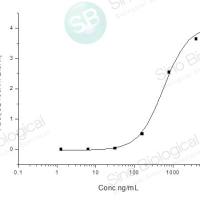Identification of Mutations in the Kir6.2 Subunit of the KATP Channel
互联网
455
The beta-cell ATP-sensitive potassium channel is a key component of stimulus —secretion coupling in the pancreatic beta-cell. The channel consists of four subunits of the inwardly rectifying potassium channel Kir6.2 and four subunits of the sulfonylurea receptor 1. Loss of function mutations in the KCNJ11 and ABCC8 genes that encode for Kir6.2 and SUR1 can cause over-secretion of insulin and result in hyperinsulinism of infancy, while gain of function mutations in KCNJ11 and ABCC8 have recently been described that result in the opposite phenotype of diabetes.
Genetic testing is important for patients with hyperinsulinism or neonatal diabetes, as identification of a KATP channel mutation confirms a diagnosis of their disorder. This genetic information may direct the clinical management; for example, patients with neonatal diabetes may transfer from insulin to sulfonylu-reas with an improvement in glycaemic control. The genetic diagnosis can also help to predict the likely course of the disease and may allow accurate counselling in terms of recurrence risk for these families.
This chapter focuses on the methodology used for the analysis of the KCNJ11 gene by direct sequencing. The same principles can be employed for ABCC8 analysis although the polymerase chain reaction (PCR) primers will differ. Details on DNA extraction from peripheral blood leukocytes, amplification of the KCNJ11 gene by the PCR, sequencing, and mutation detection are provided.









